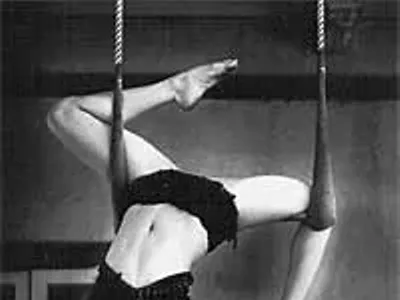
Audio By Carbonatix
[
{
"name": "GPT - Leaderboard - Inline - Content",
"component": "35519556",
"insertPoint": "5th",
"startingPoint": "3",
"requiredCountToDisplay": "3",
"maxInsertions": 100,
"adList": [
{
"adPreset": "LeaderboardInline"
}
]
}
]
According to Dan Robbins, the roots of conceptual art can be found in the American homemakers and aging hobbyists of the 1950s who spent $3 on a kit of canvas and oils and — without pretense or apology — appropriated someone else’s artwork as their own, hanging the results in their rec room.
Robbins should know. The Detroit native designed one of the first forms of paint-by-numbers, known as the Craft Master paint-by-numbers kit, in a Detroit paint factory in the 1950s. Though his work has been mimicked by generations of manufacturers who’ve turned out distilled versions of his award-winning designs, the artist remains the leader of what the Smithsonian Institution called “the craze that swept the nation.”
In the Paint Creek Center for the Arts exhibit, “Paint Creek By Number,” rare and collectible vintage paint-by-numbers canvases that Robbins designed in the ’50s (which were mass-produced as kits and eventually painted by ordinary folk) are on loan from the Skip Davis collection. The exhibition also features “Mega Mona,” the world’s largest paint-by-numbers “Mona Lisa” painting, as well as variations on the paint-by-numbers “Mona Lisa” by local artists. With the exhibit, Paint Creek joins the ranks of countless others in celebrating an art form that turned the ordinary person into a painter.
Before meeting Robbins, I confused the man with his art. It was so easy to assume that he’d be a gee-whiz sort of guy, a small-towner interchangeable with any Sunday painter. In doing so, I mistook him and paint-by-numbers. Truth be known, the man has unbelievable business acumen and a thoughtful wit. After a resurgence of paint-by-numbers in the late ’80s, Robbins noticed countless press articles about the art form and was shocked that the media never called him to get their facts straight. So he wrote a book to tell the whole truth about the rise of paint-by-numbers.
Robbins lives comfortably in a pleasant suburb of Chicago. Since publishing his humorous autobiographical account Whatever Happened to Paint-by-Numbers in 1997, he’s made occasional trips across the country to give slide lectures on his story, telling audiences about how he spent years watching the value of his original works increase. Some pieces sell for anywhere from $500 to $1,000.
That paint-by-numbers is today considered an American icon is only the latest chapter of Robbins’ tale, which starts in Detroit. After graduating from Cass Tech in 1943, he enlisted in the Army Corps of Engineers at age 18. Upon his return to civilian life, he began his career as an artist, working as a subcontractor for General Motors. He produced the automaker’s exhibit “Motorama” for Chicago’s Museum of Science and Industry. But automotive art wasn’t inspiring him, and Robbins occasionally took on odd side jobs.
In 1949, Robbins answered an ad for a freelance job for Max Klein, who owned the Palmer Show Card Paint Company, a small Detroit company that sold craft supplies in bulk to retailers. Klein hired Robbins to design packaging, like labels for jars of paint or powders.
When Klein learned his products were being used to paint figurines, he came up with how-to sets for doing just that. The kits doubled the company’s revenue. Klein assigned Robbins to create other how-to sets, such as washable paint sets for children.
Robbins says that one day as he was working on the project, he remembered hearing that Leonardo da Vinci had pawned off some of the tedious work of background painting and under-painting to his students. The Renaissance master apparently gave his students numbered outlines to follow. A light went on in Robbins’ head.
He expanded on da Vinci’s idea and designed a paint-by-numbers kit for regular adults. A painter himself, Robbins decided to keep it “arty, simple and safe,” with six flat colors and a design offering easy-to-paint spaces. He decided he’d replicate a Cézanne still life.
First he drew the piece in pencil. Once he chose and implemented the colors, Robbins put each paint in a tiny one-ounce jar. After correcting mistakes, such as forgetting to number and paint many white spaces, he titled the completed work Abstract No. One.
Robbins showed his boss, who immediately responded, “Abstracts are for people who call themselves artists, but can’t paint worth a damn!”
But Klein knew that Robbins, his art director, was on to something. He gave Robbins the green light to create outlines for landscapes and flowers. Voila, an art form — originally featuring 22 oil paints, a wood palette, a brush, and a 12- by 16-inch canvas sleeve — was born.
Between 1952 and 1953 alone, Robbins’ team couldn’t keep up with their orders. The company manufactured nearly 75,000 paint-by-numbers kits a day.
Yet when Robbins set out to patent his creation, he discovered that similar “how-to” products dated back to 1923, and his search turned up multiple variations on the make-it-yourself concept, such as instruction kits for knitting, mosaics, pottery making and more. In fact, it is something of an uncanny coincidence that a man by the name of Royce Caron, simultaneously working in the early ’50s at a company named Picture Craft, was also working on a version of paint-by-numbers.
So why was do-it-yourself painting, specifically, to become such a phenomenon? At its heart, the Craft Master paint-by-numbers kit brought oil painting — historically considered the finest of art forms, requiring years in the studio and the academy — to the people. Painting by numbers caught on in suburbs across America because it offered the masses the experience of making art.
Meanwhile, critics were outraged, and so were the judges of a San Francisco art competition, who in 1952 awarded third prize to a paint-by-numbers submission. The judges thought the entry was an original piece of artwork.
“I’ve been asked many times if paint-by-numbers is art,” says Robbins. “If not art, certainly in the mind of the painter, it is the illusion of art.”
A decade after the Craft Master kit was introduced at a Macy’s trade show, Andy Warhol was on to it — he painted his own renditions of Robbins’ work, transforming them into his own art. Shortly afterward, Warhol created the Campbell’s soup can images and initiated the mass distribution of printed copies, sparking the phenomenon we know as Pop Art.
But Robbins put the brush into people’s hands and there was no stopping the rage. His designs weren’t easy; some were complicated — Robbins developed a special line of extreme paint-by-numbers, featuring more than 60 paints and an unbelievably detailed key requiring a keen eye and steady hand.
Craft Master was eventually sold for $9 million after eclipsing a host of imitators who persist to this day with cheap poster board and acrylic.
Decades ago, a Baltimore, Md., housewife wrote Robbins. Her letter is a perfect example of what art is about and how intimate the artistic process can be to the artist, amateur, copycat or otherwise.
She wrote, “I’m sorry I ever saw any of your paintings. My home is disgraceful and I sit here all day and paint. I’m spending my husband’s money which I ought to be saving. Please send me a list of any new subjects you have.”
Paint Creek by Number runs until Saturday, July 17. Paint Creek Center for the Arts is located at 407 Pine St. in downtown Rochester.
Rebecca Mazzei is a freelance writer living in Chicago. E-mail letters@metrotimes.com




